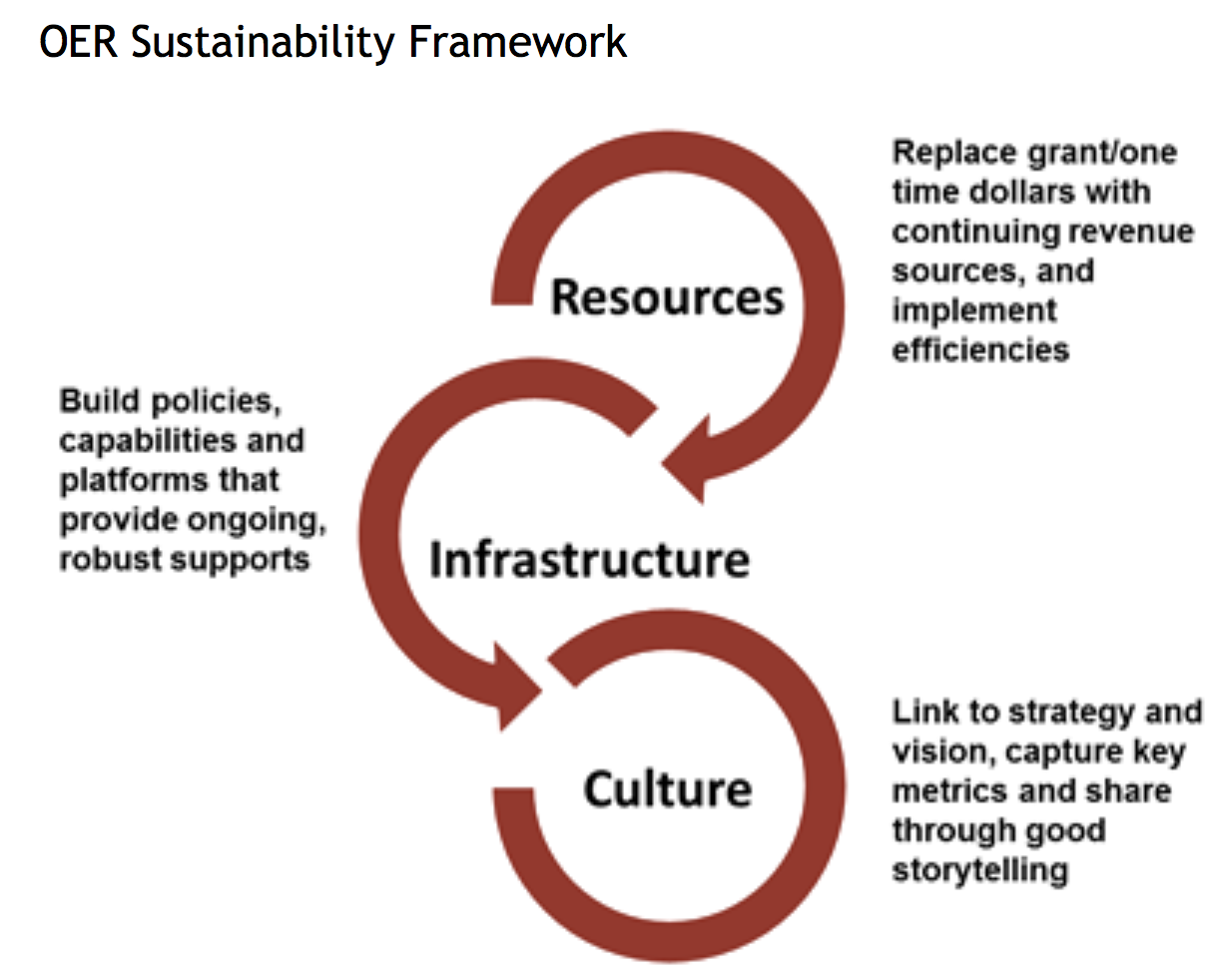by Rebecca J. Griffiths
October 12, 2018

A new SRI report, Participant Experiences and Financial Impacts: Findings from Year 2 of Achieving the Dream’s OER Degree Initiative, provides evidence that degree pathways based on Open Educational Resources (OER) can increase college affordability and provide more engaging, relevant, and well-aligned instructional materials than courses using traditional textbooks. Developing these pathways requires a substantial investment by institutions and participating faculty members, as well as ongoing resources, infrastructure developments, and culture changes to sustain the work.
OERs are freely available and openly licensed instructional materials that have gained increasing attention from educators and policy makers, who have funded state and national programs to support broader use of OERs in postsecondary education.
The OER Degree Initiative supports 38 community colleges nationwide in replacing proprietary instructional materials with OERs. The initiative is led by the nonprofit organization Achieving the Dream (ATD), with funding from the William and Flora Hewlett Foundation, the Bill & Melinda Gates Foundation, the Great Lakes Higher Education Guaranty Corporation, the Shelter Hill Foundation, and the Speedwell Foundation.
SRI’s new report presents findings from a survey of 2,441 students enrolled in an OER course at one of 12 participating colleges. The survey collected information on the financial burden of textbook costs and students’ typical purchasing behavior, as well as on student awareness of OER courses, their perspectives on these courses, and how OER degrees would affect their ability to afford college.
Additionally, SRI researchers visited a diverse sample of 11 participating colleges to learn about the experiences of faculty, administrators, and students with the OER degree initiative’s roll out and associated barriers and facilitators. The visits also afforded an opportunity to delve deeper into themes from the survey such as perceived impacts on college affordability. SRI’s research collaborator, rpk GROUP, analyzed costs and savings to students and institutions. Through these data, a detailed picture of the overall costs and benefits of OER degrees is coming into focus.
Our evidence suggests that colleges are making progress towards several of their objectives for OER degree initiatives:
- Affordability – On average, students saved between $66 and $121 per course, with the lower estimate factoring in students’ typical purchasing behavior. Forty-one percent of students reported that OER degrees would affect their ability to afford college.
- Access and equity – Students receiving Pell Grants constituted approximately 43% of overall OER course enrollment. The share of students reporting that OER degrees will significantly impact their ability to afford college was higher for Pell recipients and underrepresented minorities than for students overall. Similarly, the share of students reporting having dropped a course due to material costs was higher for minorities (17%) than students overall (12%).
- Curriculum and pedagogy – A number of instructors reported that using OER improved the alignment of their course materials to learning objectives. Many said that their use of OER materials, which are more contemporary and relevant than traditional textbooks, also increased student engagement. Students mirrored these reports, saying the OER materials were more engaging. In most cases, however, instructors did not substantially change their pedagogical practices due to use of OERs.
- Time to degree – It is too soon to know whether students who take multiple OER courses progress more quickly and successfully. While some instructors reported increased engagement, most did not see differences in course outcomes. Few students said they were likely to perform better in OER courses.
- The costs of launching an OER degree are substantial. Based on an analysis of 5 colleges that provided in-depth information about their program expenditures, these colleges spent on average nearly $500,000 over 2 years to launch their OER degree pathways. We also found that colleges spent on average $11,700 to convert each course to OER.

In the final year of OER Degree Initiative, colleges are focused on identifying ongoing sources of funding and building infrastructure to sustain OER degrees. The report presents a framework for sustainability, shown to the right.
Identifying ongoing funding is important given the time and effort required to convert courses to OER, as SRI reported in 2017, OER course development takes 1.5-2 times as long as traditional course development. Moreover, stipends only covered 20% of the costs of instructor time, meaning that the remainder was either repurposed from other activities or came from instructors’ personal time. While the grant supports the initial conversion of courses needed for a degree pathway (20, for most colleges), the costs of ongoing maintenance and new course development must be fully covered.
While students said that these efforts provide meaningful benefits, we do not yet know whether these cost savings and improvements in course quality cause students to enroll and/or succeed in more courses. In the coming year, SRI will analyze impacts on academic outcomes associated with OER degree courses and shed more light on how these pathways affect progress to degree completion.
Project: OER Degree Initiative
